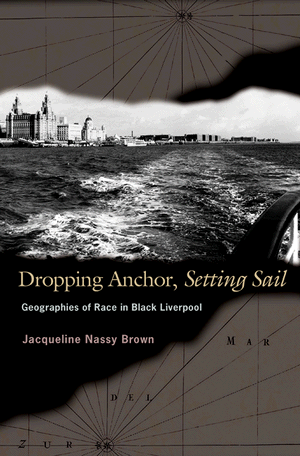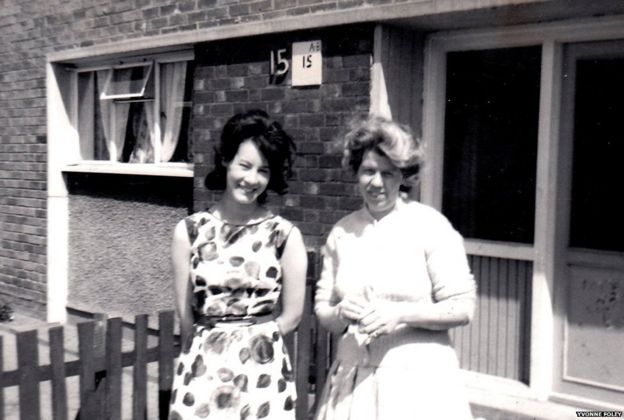Dropping Anchor, Setting Sail: Geographies of Race in Black Liverpool
Princeton University Press
2005
312 pages
6 x 9
ISBN: 978-1-4008-2641-4
Jacqueline Nassy Brown, Associate Professor of Anthropology
Hunter College of the City University of New York

The port city of Liverpool, England, is home to one of the oldest Black communities in Britain. Its members proudly date their history back at least as far as the nineteenth century, with the global wanderings and eventual settlement of colonial African seamen. Jacqueline Nassy Brown analyzes how this worldly origin story supports an avowedly local Black politic and identity—a theme that becomes a window onto British politics of race, place, and nation, and Liverpool’s own contentious origin story as a gloriously cosmopolitan port of world-historical import that was nonetheless central to British slave trading and imperialism.
This ethnography also examines the rise and consequent dilemmas of Black identity. It captures the contradictions of diaspora in postcolonial Liverpool, where African and Afro-Caribbean heritages and transnational linkages with Black America both contribute to and compete with the local as a basis for authentic racial identity. Crisscrossing historical periods, rhetorical modes, and academic genres, the book focuses singularly on “place,” enabling its most radical move: its analysis of Black racial politics as enactments of English cultural premises. The insistent focus on English culture implies a further twist. Just as Blacks are racialized through appeals to their assumed Afro-Caribbean and African cultures, so too has Liverpool–an Irish, working-class city whose expansive port faces the world beyond Britain–long been beyond the pale of dominant notions of authentic Englishness. Dropping Anchor, Setting Sail studies “race” through clashing constructions of “Liverpool.”
Read the entire first chapter for free here in HTML or PDF format. Excerpts are below.
“TO UNDERSTAND Black people, you’ve got to understand Liverpool.” So argued my friend Scott, a sixty-year-old Black man born and raised in that city…
…In the midst of describing the center’s aims he stopped short, interrupting himself to say, “To understand Black people, you’ve got to understand Liverpool.” He explained that Stanley House was established by charitable White people. But their charter referred to the children of African seamen and the White women to whom they were often married as “half-castes,” a much despised term now…
Variations of that question were being posed in seaports all over Britain and in the overlapping arenas of social work, philanthropy, and academia, which would, in the mid to late nineteenth century, include physical anthropology and ethnology. In contrast to eighteenth-century British ideas about human variation, which considered religion and clothing as key indices of civilization and posited climate as an explanation of different human potentials, the 1840s saw the emergence of a more biological argument (Wheeler 2000; Hamer 1996). Physical types, which were correlated with areas of geographic origin, became the basis of racial distinctions and served to explain differential human capacities. Classificatory schema abounded. In this respect, Brontë’s mysterious, somewhat monstrous representation of the racially ambiguous Heathcliff is intriguing; it accords with the fearful image of the half-caste conjured up in Gothic literature and other discursive contexts. As H. L. Malchow provocatively explains, “[O]ne may define [the Gothic] genre by characteristics that resonate strongly with racial prejudice, imperial exploration and sensational anthropology—themes and images that are meant to shock and terrify, that emphasize chaos and excess, sexual taboo and barbarism, and a style grounded in techniques of suspense and threat” (1996: 102). Just as the unpredictable and brooding Heathcliff posed an ever-present danger, so too were the “hundreds of half-caste children” in 1920s Cardiff said to have “vicious tendencies.” These children also confused the categories of science, exhibiting, according to the press, a “disharmony of physical traits and mental characteristics” (Rich 1986: 131). In an era when science had attained unprecedented legitimacy (Lorimer 1996), the racially ambiguous or mixed person was a threat to the social order. Again, Malchow writes, “The terms ‘half-breed’ and ‘half-caste’ are double, hyphenated constructions resonating with other linguistic inadequacies and incompletes—with ‘half-wit’ or ‘half-dead’, with ‘half-naked’ or ‘half-truth’, and of course with ‘half-civilized’” (1996: 104). The person of mixed race was a pathology to be studied from both literary and “scientific” points of view. Their sexuality was of particular concern. It was one thing to be born of immoral unions in immoral circumstances; but as freaks of nature themselves, what moral predilections would they reproduce? Could they reproduce? (Malchow 1996; Young 1995)…
…Into a milieu defined, at the very least, by the above-described dynamics of colonialism, race, nationality, place, sexuality, class, and gender entered one Muriel Fletcher, infamous in present-day Liverpool for a study she conducted in 1928 under the auspices of the Liverpool Association for the Welfare of Half- Caste Children. Fletcher was trained in social research at the Liverpool University School of Social Science, where her circle included eugenicist anthropologists (Rich 1986). The subjects of Fletcher’s research were White women who were formerly involved with African men and their “half-caste” children. She published her conclusions in Report on an Investigation into the Colour Problem in Liverpool and Other Ports. Ultimately, the Fletcher Report, as it is commonly called, concludes that “the colour problem” in that city owed not to the racist structuring of British society, the ideologies promulgated by the British state and its institutions, nor those circulating within Liverpool’s social welfare establishment, nor to the everyday racism of White Liverpudlians who routinely subjected colored seamen to violence. Rather, Fletcher attributed the colour problem in Liverpool to African seamen. It would be hard to state emphatically enough how thoroughly racial politics in Liverpool/Britain reflect the legacy of the Fletcher Report….
…The African man creates the White woman’s problems, while they both create the myriad crises said to befall their “half-caste” children. Fletcher uses the term half-caste in various ways. At times she distinguishes between “Anglo-Negroid” and “Anglo-Chinese” children; yet both of these groups belong to the half-caste category. Fletcher remarks at the outset, however, that “Anglo-Chinese” children are quite well-adjusted. Since they pose no problem, we need not hear anything more about them. As well, in the early pages, Fletcher uses the term Anglo-Negroid for children of African men and White women. In detailing the minute phenotypical features of “half-caste” children, the Fletcher Report marks some of them “English,” as in “30 per cent. had English eyes… A little over 50 per cent. had hair negroid in type and colour. 25 per cent. had English, while the remaining 25 per cent. exhibited some curious mixtures… About 12 per cent. had lips like the average English child” (27). She refers to these children’s social characteristics in similar terms. While she does not suggest that biological inheritance is at work, the children nevertheless manifest a troubling duality, exhibiting the worst trait of each parent. Here speaking about “half-caste” girls, Fletcher argues, “From her mother the half-caste girl is liable to inherit a certain slackness, and from her father a happy-go-lucky attitude towards life” (34). The problems of half-caste children are not of their own making, then. They are victims. They attend earnestly to their schoolwork and seem amiable enough. But the immorality that characterizes their home life, given the low character of both parents, cannot help but be reproduced in these hapless children….
Read the entire first chapter for free here in HTML or PDF format.






